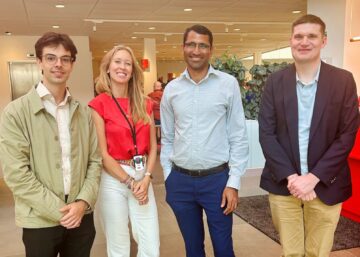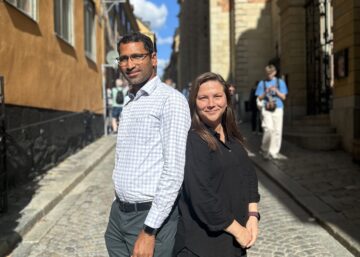Thoughts on how to increase learning within organizations
“I’ve been doing this for years, I learned a lot and I’m constantly learning new things”.
Well, if you think you’re an expert, maybe you are, or maybe only as long as you stay in your pond, your comfort zone. Not everyone needs to be an expert, but we all do know a lot of things very well. Or do we?
At the same time as you are working on your personal development, the company as a whole is working hard (should be, or it will not go well) on lifting the competence level of all its employees. To some employees this comes naturally, but to many it is something they can’t get the time to prioritize — or know where to start.
Prepare. You think you know something worth teaching others, to help lift the company’s competence level, to ‘move the needle’. So you sell the idea to management and book some slots for this ‘teaching’. Time to prepare some slides (slides is not all, I’ll come back to that), how hard can it be?
When you start to compile the slides you hear all the possible questions that might arise. And you realize that you don’t have the clear answers you thought you had. You, before even meeting the persons whose time you’re asking for, have to relearn and learn things you somehow skipped.
It’s a good thing and you’re already feeling grateful to the crowd. You start to think more and more about what to expect if you were in the audience.
Show time. When the actual ‘teaching’ starts, more unexpected questions arise, now directly from the audience and you’re only happy to hear these new angles, new ways of looking at things. Yes, some of the questions reveal that ‘some’ base knowledge is missing from the ‘students’, but that is only helping with later sessions.
If all goes well – making sure they dare to ask ‘stupid questions’ – they ask, they want to know more.
So do you. And they help you by asking the questions. That’s the title, ‘Teaching is learning’.
Now to share some thoughts and experiments on how to get to learning, not again memorizing without fully understanding.
Benjamin Franklin’s words, “Tell me and I forget, teach me and I may remember, involve me and I learn”, comes to mind. There’s a challenge there. It’s hard enough to write good material on topics for others to read/listen to, but how to get to the last mile, actual learning?
One way to engage and get to learning: Brownbags
Some years back I brought the concept of ‘Brownbag seminars’ to gather the data scientists spread all over the company’s landscape, and it was much appreciated, self-organized and continued for quite some years.
The base concept is ‘we all need to eat lunch’, so once a week we booked a room for 90 min (60 should, ideally, anyway be lunch, right?). The structure was partly based on an idea from academia with three persons every week responsible to go deep on some topic (that all were supposed to read up on): one Reader (who had really read up on the topic and presented a summary), one Experimentalist (who did some demo from code), and one Wizard (asking the more fundamental questions). The last one, the Wizard, was harder to cover, but here we shared that job.

In addition to these deep-dives all participating in the meeting were encouraged to bring up any demo or problem they were having from their daily data science projects (no need to prepare beforehand to absolute perfection). Overall it was a good way of sharing and learning together, and at points also applying (‘engage’, remember?) into real-life applications.
Another method when engaging learners company wide: Distributed close reading
I was for a year coordinating the (back then, semi-new) deep learning area and one thing we wanted to do was to help more to learn about deep learning and its possibilities. We had done some rounds of the above mentioned Brownbags on the subject, but now more colleagues wanted to join this — and running Brownbags remote wasn’t as good as in person. We did some attempts to get more countries to pick up the concept, but it wasn’t clear that it took off as well as the ‘original’ Brownbag.
We decided to read ‘Deep Learning with Python’ by François Chollet — cover to cover. All together.
How? By dividing the book into homework — read and code — for the full Autumn ‘semester’. All of us were to read (and test out the code) the week’s text carefully and while doing so write questions to the text. Questions on things you found hard to grasp or didn’t understand, or good questions for overall understanding of the text.
Then, each week we gathered online from our respective office rooms across the company (we’re in six countries), starting with a summary from our more senior data scientists, then breaking up in groups. Each group got a part of all the gathered questions (from the homework) to answer together, then after the break rejoined to present. Some of the questions were not yet answered, and some answers were incomplete — something we now addressed as a full group.
Sound maybe like a lot of work, but it really worked. Almost all stayed till the end of the ‘semester’, and overall the area of deep learning got good traction and (of course not only because of the course) more and more deep learning popped up in actual work within the company.
There are of course many more ways (hackathons, and co-learning (to have someone more to learn with)), and it would be great to hear of ways of learning that worked for your companies.
Above goes hand in hand with ‘teaching is learning’ — all engaged in above learned a lot helping themselves and others to learn.



